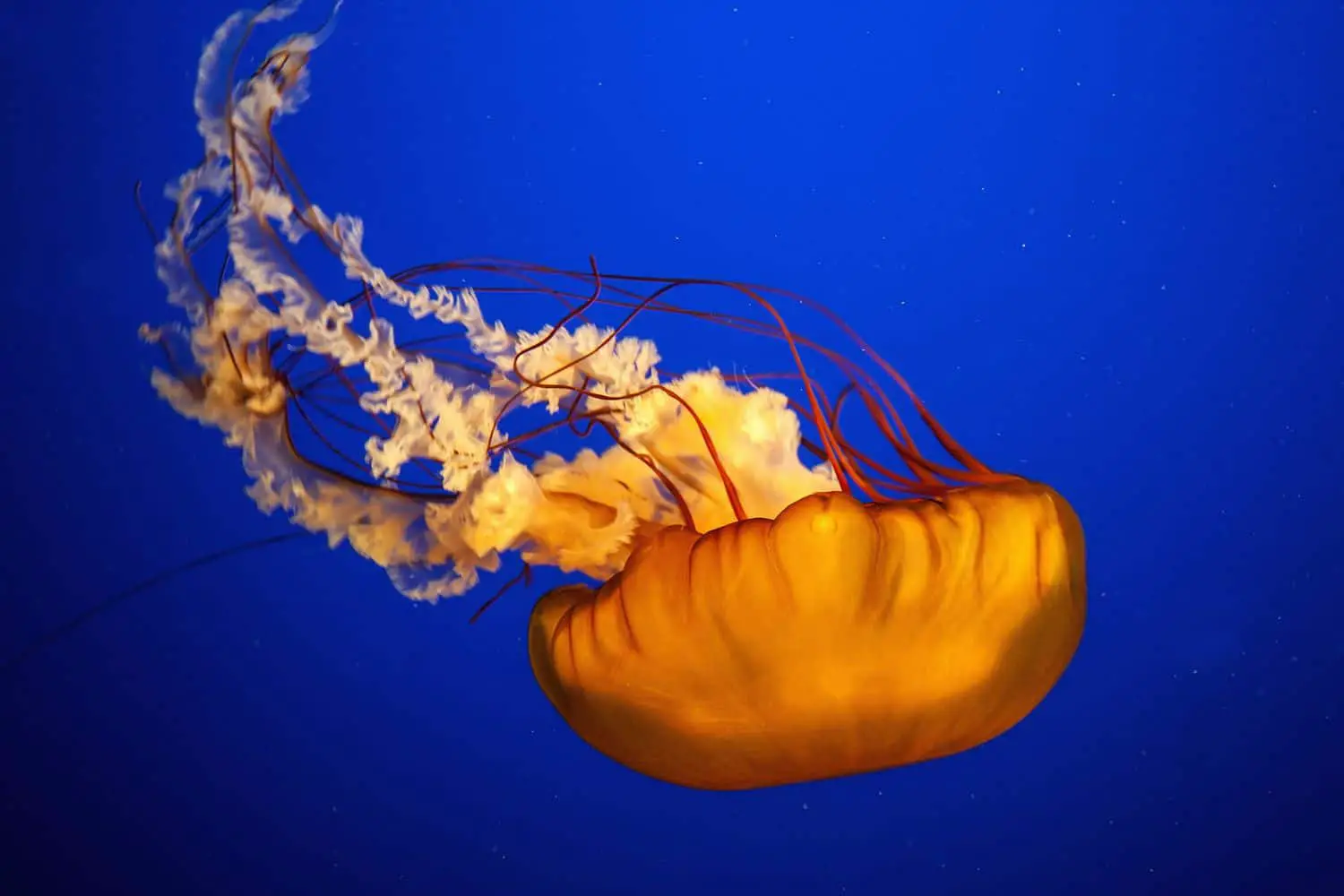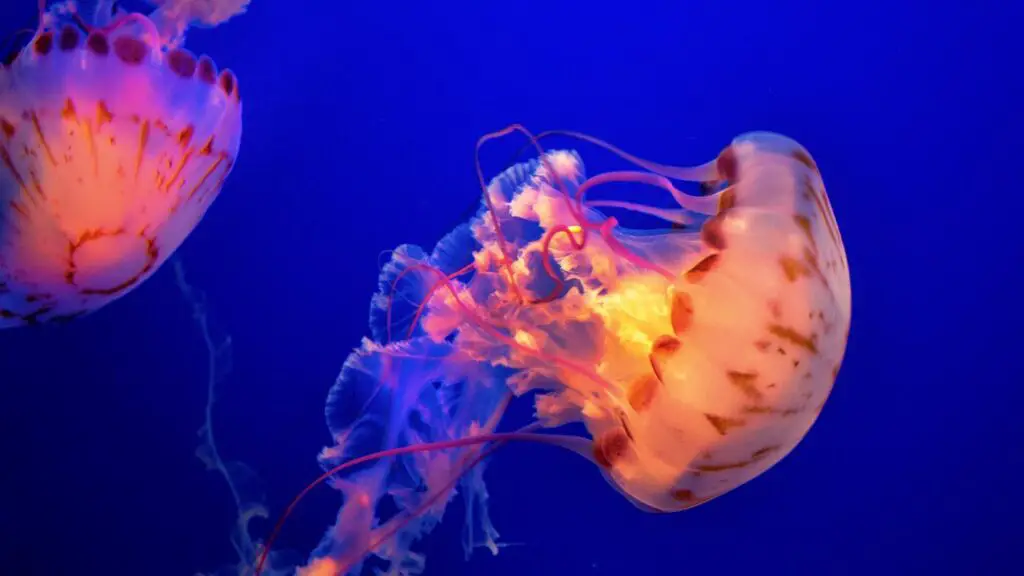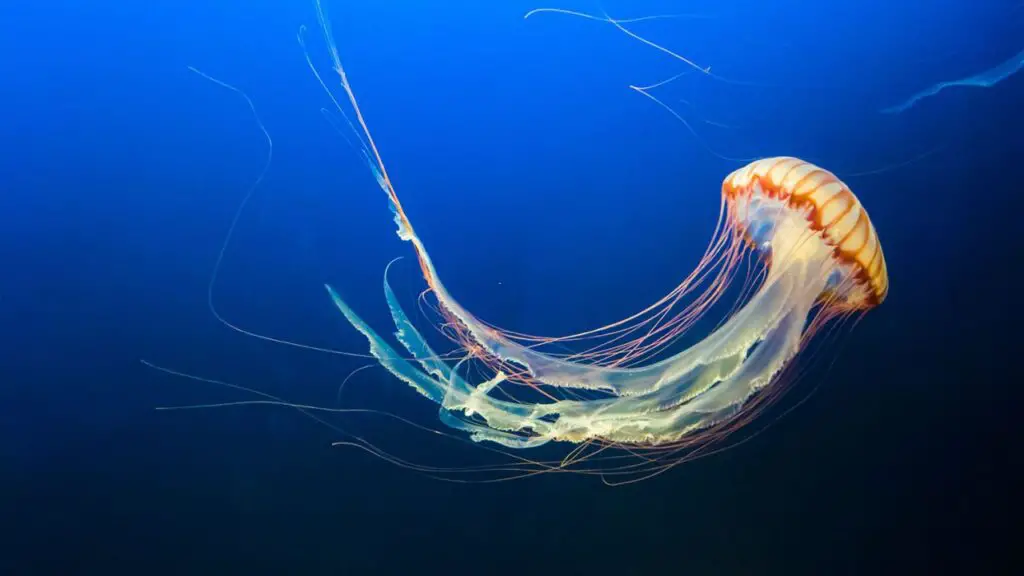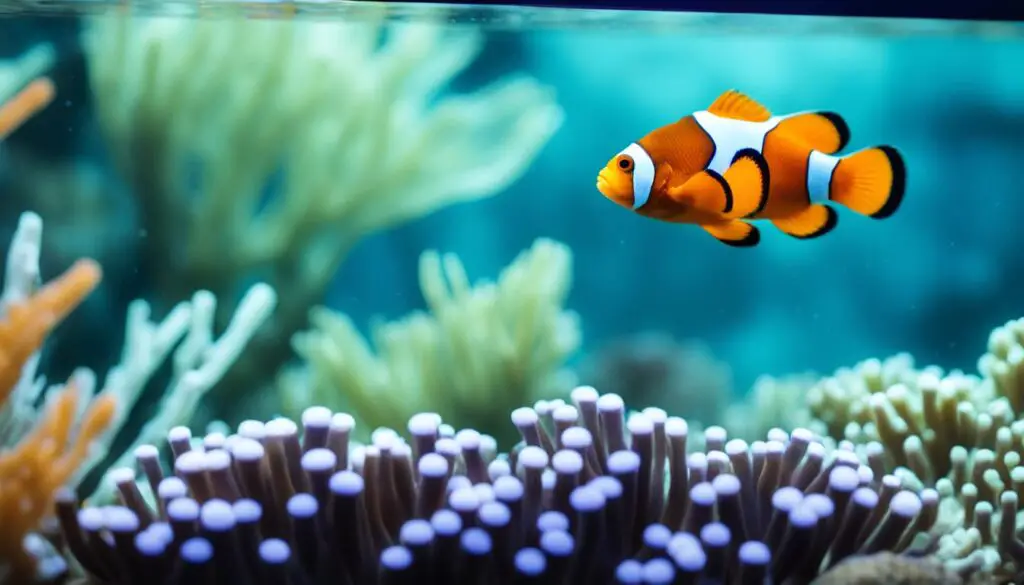Do Jellyfish Have Brains

Introduction
Do Jellyfish Have Brains: The world beneath the waves has long fascinated scientists and nature enthusiasts alike. Among the myriad of creatures inhabiting the ocean’s depths, jellyfish stand out for their ethereal beauty and seemingly otherworldly existence. Yet, as we delve deeper into the realm of marine biology.
Jellyfish, belonging to the phylum Cnidaria, have captivated researchers for centuries with their primitive yet remarkable biology. Unlike mammals or birds, they lack many of the conventional features we associate with intelligence, such as a centralized brain. However, dismissing them as mere floating blobs would be a grave oversimplification of their complexity.
In this exploration, we embark on a journey to unravel the mysteries of jellyfish cognition and neurobiology. We will dive into the peculiarities of their nervous systems, shedding light on the decentralized network of interconnected nerve cells that govern their behaviors. While jellyfish may not possess brains in the conventional sense, they display a surprising array of adaptive responses to their environment, hinting at a hidden intelligence we are only beginning to comprehend.
Through a synthesis of scientific research and a deepening understanding of these gelatinous creatures, we aim to shed light on the question of whether jellyfish truly have brains, and in doing so, gain a greater appreciation for the enigmatic wonders of the ocean.

How does a jellyfish live without a brain?
Instead of a single, centralized brain, jellyfish possess a net of nerves. This “ring” nervous system is where their neurons are concentrated—a processing station for sensory and motor activity. These neurons send chemical signals to their muscles to contract, allowing them to swim.
Jellyfish, despite their lack of a centralized brain, have evolved remarkable strategies for survival in their aquatic habitats. Their neural organization is distributed throughout their body in a loose network of interconnected nerve cells called a “nerve net.” While this network is far simpler than the brains found in more advanced organisms, it allows jellyfish to process sensory information and respond to their environment effectively.
Jellyfish rely heavily on instinctual behaviors and reflexes driven by this nerve net. They can detect changes in light, temperature, and touch, helping them navigate and respond to potential threats or prey. For instance, when a jellyfish’s tentacles come into contact with a foreign object or a potential source of food, their nerve net triggers a rapid, coordinated response, often involving the firing of specialized stinging cells called cnidocytes.
This decentralized nervous system, combined with their innate behaviors, enables jellyfish to carry out essential functions like hunting, escaping predators, and responding to environmental cues. While they may lack the intricate cognitive processes associated with brains in more complex organisms, jellyfish have evolved a remarkable and highly efficient way of living in their underwater world, demonstrating that there’s more than one path to survival and adaptation in the vast realm of marine life.
Do jellyfish have heart?
Jellyfish have no brain!
They also have no heart, bones or blood and are around 95% water! So how do they function without a brain or central nervous system? They have a basic set of nerves at the base of their tentacles which can detect touch, temperature, salinity etc.
Jellyfish do not have a heart. Unlike many vertebrates, including humans, that have a circulatory system with a centralized heart that pumps blood to deliver oxygen and nutrients throughout the body, jellyfish have a very different and simpler mechanism for distributing nutrients and oxygen.
Jellyfish are composed of a gelatinous, translucent substance primarily made up of water. They lack complex internal structures like organs, including a heart. Instead, they rely on a process called diffusion to transport essential substances.
In diffusion, nutrients and oxygen are absorbed directly from the surrounding water through the thin walls of their body, and waste products are released in the same manner. This process is possible because jellyfish have a relatively simple body plan, with cells in close proximity to the environment.
Their reliance on diffusion restricts the size and complexity of jellyfish, as larger and more complex organisms require a circulatory system with a heart to efficiently transport essential substances to all cells. Jellyfish, being predominantly passive drifters in the ocean currents, have evolved to adapt to their simple lifestyle by using this basic method of nutrient exchange rather than developing complex internal organs like a heart.
Do jellyfish have a heart or a brain?
Lacking brains, blood, or even hearts, jellyfish are pretty simple critters. They are composed of three layers: an outer layer, called the epidermis; a middle layer made of a thick, elastic, jelly-like substance called mesoglea; and an inner layer, called the gastrodermis.
Jellyfish, intriguing creatures of the ocean, present a fascinating paradox in the world of biology. They neither possess a centralized brain nor a heart, two key components typically associated with higher animals.
Firstly, they lack a brain. Unlike mammals or birds, which rely on a centralized brain to process information and coordinate complex behaviors, jellyfish have a decentralized nervous system known as a “nerve net.” This network of interconnected nerve cells allows them to react to stimuli in their environment, but it lacks the complexity of a brain.
Secondly, jellyfish do not have a heart. Instead, they have a rudimentary circulatory system characterized by a simple, pulsating sac or cavity called a “gastrovascular cavity.” This sac helps distribute nutrients, gases, and waste products throughout their gelatinous bodies. It functions somewhat akin to a circulatory system but lacks the specialized organ and complex structure that define a heart.
Jellyfish challenge our traditional notions of what it means to be an intelligent or complex organism. They rely on instinctual behaviors and decentralized networks to survive in their aquatic realm, demonstrating that life can thrive in diverse and unexpected ways, even without the conventional organs we associate with higher animals.
What is special about a jellyfish brain?
Jellyfish have no brain!
They have a basic set of nerves at the base of their tentacles which can detect touch, temperature, salinity etc. Since they don’t have a brain, they depend on automatic reflexes in response to these stimuli! Catching prey is also a matter of chance.
What is special about a jellyfish brain, or more accurately, their neural structure, lies in its simplicity and efficiency in governing their unique way of life. Unlike the complex brains found in many other animals, jellyfish possess what is known as a “nerve net.”
This nerve net, distributed throughout their gelatinous bodies, is specialized for their needs. It allows them to process sensory information and coordinate their movements and responses to their environment. What makes this neural architecture special is its adaptability and responsiveness. While it may not afford them the cognitive complexity of mammals or birds, it serves them exceptionally well in their underwater world.
Jellyfish exhibit remarkable behaviors driven by this neural network. They can respond to changes in light, temperature, touch, and chemical cues, enabling them to navigate, hunt for prey, and evade predators. Their decentralized neural structure allows for rapid, instinctual reactions, such as contracting their bell or deploying their stinging tentacles, all without the need for a central command center like a brain.
What is special about a jellyfish brain is its minimalist design perfectly suited to their needs, highlighting the incredible diversity of adaptations that have evolved in the animal kingdom to thrive in various ecological niches.
Do jellyfish have memories?
It turns out that, even though they have no brains, they can learn and form memories. Researchers have seen for the first time that jellyfish can learn in a complex manner, and adapt their behavior based on that learning.
The question of whether jellyfish have memories is a topic of scientific inquiry and debate. Jellyfish, with their decentralized nervous systems and relatively simple neural architecture, do not possess memory systems in the same way that more complex animals with centralized brains do. They lack the anatomical structures associated with memory storage, like the hippocampus in mammals.
However, research has suggested that jellyfish may exhibit a form of memory known as “behavioral plasticity.” This means that they can adapt their behaviors in response to past experiences or environmental cues. For example, some studies have shown that jellyfish can learn to associate specific stimuli, like light or food, with certain outcomes and modify their behavior accordingly.
This behavioral plasticity is believed to be driven by their nerve net, which can store information about past experiences in a simplified manner. While it may not be a true memory system in the way humans or some other animals experience it, it allows jellyfish to respond to their environment more effectively.
While jellyfish do not have memories in the conventional sense, they exhibit a form of learning and adaptation that enables them to thrive in their underwater habitats. Their unique neural architecture allows them to process and respond to information from their environment, showcasing the remarkable diversity of cognitive adaptations in the animal kingdom.
How do jellyfish control their movements and behaviors without a brain?
Jellyfish, despite lacking a centralized brain, are surprisingly adept at controlling their movements and behaviors through a combination of evolutionary adaptations and a decentralized nervous system known as a “nerve net.”
- Decentralized Nervous System: Instead of a single central brain, jellyfish have a network of interconnected nerve cells throughout their gelatinous bodies. This nerve net allows for the processing of sensory information and coordination of responses to external stimuli. While less complex than a brain, this decentralized system is effective in regulating their basic behaviors.
- Instinctual Behaviors: Jellyfish rely heavily on instinctual and reflexive behaviors shaped by their evolutionary history. For instance, when they come into contact with a potential source of food, their nerve net triggers a swift and coordinated response, such as extending their stinging tentacles to capture prey.
- Environmental Sensing: Jellyfish are highly attuned to changes in their environment. They can detect variations in light, temperature, and chemical cues. These sensory abilities allow them to navigate ocean currents, seek out prey, and respond to potential threats.
- Pulsing Motion: One of the most distinctive features of jellyfish is their rhythmic pulsing motion, driven by contractions of their bell-shaped bodies. By adjusting the frequency and direction of these pulses, jellyfish can control their propulsion and move through the water with surprising grace.
In essence, jellyfish have evolved a sophisticated yet different system for controlling their movements and behaviors, one that does not rely on a centralized brain but is nonetheless effective for their survival and adaptation to their underwater environment.
Can jellyfish learn or remember things without a brain?
Jellyfish, despite their lack of a centralized brain, exhibit a form of learning and memory known as “behavioral plasticity.” While they do not possess memory systems akin to those in organisms with complex brains, they can adapt their behaviors based on past experiences and environmental cues. This behavioral plasticity arises from their decentralized nervous system, the nerve net, which allows them to process and store information in a simplified manner. Here’s how jellyfish demonstrate this ability:
- Associative Learning: Some studies have shown that jellyfish can learn to associate specific stimuli, like light or the presence of food, with certain outcomes. For instance, they may learn that a particular type of prey is worth pursuing or that certain light conditions signal the best time to feed.
- Adaptive Responses: Jellyfish can modify their behaviors based on these learned associations. They may adjust their movements, such as swimming patterns or the deployment of their stinging tentacles, in response to past experiences or environmental cues.
- Short-Term Adaptation: While their memory may not be long-lasting, jellyfish exhibit a capacity for short-term adaptation. This allows them to respond to changing conditions or encounters with potential prey or predators.
Jellyfish do not have memory and learning mechanisms as sophisticated as organisms with brains, but their ability to exhibit behavioral plasticity demonstrates that they can learn and remember things in their own unique way. Their adaptations enable them to thrive and adapt to their surroundings in the absence of a traditional brain.
How do jellyfish sense their environment without a brain?
Jellyfish, intriguing marine creatures, manage to navigate and interact with their environment despite lacking a centralized brain. Their remarkable sensory abilities are a testament to the wonders of nature’s design. Instead of a conventional brain, jellyfish possess a loose network of nerves known as a “nerve net” that is dispersed throughout their gelatinous bodies.
Jellyfish primarily rely on specialized structures called rhopalia, located around the edge of their bell-shaped bodies, to sense changes in their environment. These rhopalia contain clusters of sensory cells capable of detecting light, temperature, salinity, and even slight movements in the water. Some species of jellyfish are also equipped with specialized organs called statocysts, which help them maintain balance and orientation in the water column.
This decentralized sensory system enables jellyfish to respond to environmental cues, such as avoiding obstacles, finding prey, or escaping predators. Their ability to sense and adapt to their surroundings, all without a central brain, underscores the incredible diversity of life on Earth and the remarkable ways in which different organisms have evolved to thrive in their respective habitats.

Conclusion
The quest to answer the intriguing question of whether jellyfish brains has taken us on a fascinating journey into the depths of marine biology. While these mesmerizing creatures may not possess brains in the conventional sense, our exploration has revealed the intricate and decentralized nervous systems that govern their behavior.
Jellyfish showcase a unique form of intelligence shaped by millions of years of evolution. Their rudimentary yet effective neural networks enable them to respond to their environment, navigate the ocean’s currents, and capture prey with surprising efficiency. In essence, they demonstrate a kind of intelligence that differs from the complex brains of mammals and birds but is equally remarkable in its adaptability.
Our investigation underscores the importance of appreciating diversity in nature and recognizing that intelligence takes various forms across different species. It also highlights the need for continued research into the intricacies of jellyfish neurobiology, as understanding these creatures may provide insights into broader questions about the evolution of intelligence and the interconnectedness of life in our oceans.
As we conclude our exploration, we find ourselves humbled by the enigma of jellyfish and the mysteries that still shroud their existence. They serve as a reminder of the boundless wonders of the natural world, inviting us to continue our journey of discovery beneath the waves, where countless secrets await unraveling.



